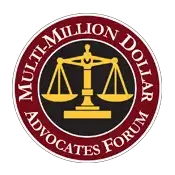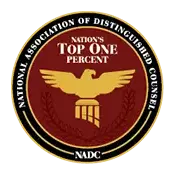Intersection Car Accidents in Florida
A recent National Highway Traffic Safety Administration report stated that between 35 and 40 percent of all reported vehicle collisions across the United States are intersection car accidents – and Florida is no exception. In fact, Florida is home to a number of the most dangerous intersections in the country.
Dangerous Florida Intersections
In 2004, a crossroads in Pembroke Pines was listed in the State Farm Danger Index as the intersection with the highest number of accidents in the nation – followed closely by other Florida intersections in Plantation, Tamarac-Lauderhill, Palm Harbor, Winter Park, Tampa, and Orlando. In response to these findings and continued reports of deadly intersection car accidents – including the death of Mark Wandall, a man killed by a red light runner in 2003 – the state government has worked to improve intersection safety.
In 2010, legislation passed to install “red light cameras” at known dangerous intersections in an effort to deter red light runners and reduce serious injuries and fatalities from intersection collisions. Although these cameras have, indeed, reduced deaths and serious injuries, the number of rear-end collisions has actually risen at many intersections with the cameras installed, as more drivers brake suddenly instead of hurrying through an amber light.
Causes of Intersection Car Accidents
The vast majority of intersection car accidents can be attributed to some kind of negligence or human error – the most common being distracted driving and a driver’s inattention to their surroundings. In fact, over 40 percent of all intersection-related collisions are due to the negligence of at least one driver. With the unfortunate increase in texting-while-driving behavior and the greater number of electronic gadgets in newer cars, this trend is expected to continue or even become worse in the near future.
Aside from distracted driving, there are other examples of human error that may contribute to intersection collisions. These include:
• Illegal maneuvers (speeding, running red lights, turning left on red, et cetera)
• Poorly maintained vehicles – particularly faulty brakes, headlights, and turn signals • Poor driver judgment or impaired eyesight causing timing errors • Improper use of turn lanes • Obstructed views of the intersection or oncoming traffic
Inexperienced drivers and senior citizens both have a higher-than-average likelihood of being involved in an intersection car accident. Not only are young drivers more likely to be distracted by a phone call, text message, or car stereo, but they also lack experience behind the wheel and may misunderstand signals, misinterpret other drivers’ actions, or misjudge the amount of time needed to get through an intersection or make a turn. Older drivers may have slower reaction times or impaired eyesight, leading them to make poor driving decisions in intersection traffic.
With the wide range of possible causes and factors contributing to intersection car crashes, anyone involved in this type of collision would be well served by talking with an accident attorney about their case. There is a good possibility that a driver not at fault can receive compensation from the party responsible for the accident and their injuries.





